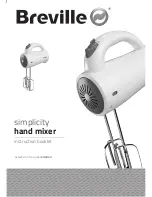
TTM 57SL
FOR
SERATO SCRATCH LIVE •
OPERATOR’S MANUAL
2.1
7
Leave the power unplugged until everything else
is connected!
PGM INPUTS 1-4
The TTM 57SL has two stereo analog inputs for
PGM 1 and two stereo analog inputs for PGM 2.
Any of these analog inputs may be set for Line
Input or Phono Input using the LINE / PHONO
switches located on the rear panel. Up is LINE
and Down is PHONO. Unused inputs are best
set to LINE. Attach your turntable’s ground wires
to the Phono Ground connectors.
Two stereo digital inputs from the USB
connection, Digital 1 and Digital 2, are also
available for PGM 1 and PGM 2. It is possible
to select any combination of digital and analog
signals.
Any of the four analog inputs may be used for
Scratch Live vinyl emulation control. Input 1 or
Input 2 may be selected for Scratch Live Virtual
Deck 1 control. Input 3 or 4 may be selected for
Scratch Live Virtual Deck 2 control. Control input
sources are selected using the Scratch Live
software. As will be discussed later in Program
Controls, if a source has been selected for vinyl
emulation control by the Scratch Live software,
the number is back-lit as a reminder that the
source is selected for control.
SET THE UNUSED INPUTS TO LINE
mIc Input
The Mic Input will accept either a
balanced ¼" TRS (tip-ring sleeve) plug
or an unbalanced TS (tip-sleeve) plug.
Any type of microphone may be used,
except those that require phantom
power to operate.
SEE “MIC LEVEL
AND EQ” ON PAGE 9.
ANALOG OUTPUTS
Main, Booth and Aux outputs each have their own
Level control, and all come from the same “Main
Mix” signal. The Main output is on balanced XLR
jacks with pin 2 “hot” per AES standards. The
Booth output is on balanced ¼" TRS (tip-ring-
sleeve) jacks, though unbalanced TS (tip-sleeve)
plugs may be used. The Aux output is on regular
unbalanced RCA jacks. Because all signals are
identical, users may use any of these outputs
as the “main” output if a different cable type is
required for system connection.
Rane recommends balanced wiring for the
strongest signal and rejection of hum and noise.
If your cable to the amp rack is less than 10
feet (3 meters), you can often get away with an
unbalanced cable. See the RaneNote “
Sound
System Interconnection
” at www.rane.com for
details and cable wiring.
connectIng the
MIXER
USB STREAMING AUDIO
There are eight channels of
streaming audio over the USB
port. Two stereo channels from
the computer and two stereo channels to the
computer. While internal processing is all 24-bit
44.1 kHz, streaming audio is 16-bit 44.1 kHz. If
the blue indicator is on, the device is connected
and communicating with the computer.
Two stereo signals from the computer appear
as Digital 1 and Digital 2 inputs. These stereo
digital signals may be selected for PGM 1 and/
or PGM 2 (see source selection in the Program
Controls section). As well as the two stereo
channels sent to the computer for vinyl emulation
control, one stereo pair can also be sent to your
computer for recording.
SEE “RECORDING” ON
PAGE 31.
When not using the Scratch Live software,
the mixer appears as two four-channel sound
cards with stereo in and stereo out. The source
for the stereo output channels must be selected
in your software. The following signals may be
selected as the source for either digital output to
the computer:
• PGM 1 Pre- or Post- Fader
• PGM 2 Pre- or Post-Fader
• Main Mix
• AUX BUS (sum of the MIC, AUX and FlexFX
Return).
POWER SUPPLY
The TTM 57SL features
an internal universal
switching power supply
that operates on any AC
mains 100 to 240 VAC,
50 or 60 Hz (most places
in the world). All that is
required when traveling is
the appropriate IEC line cord which is usually
readily available. The universal supply is a major
plus for the traveling DJ.








































